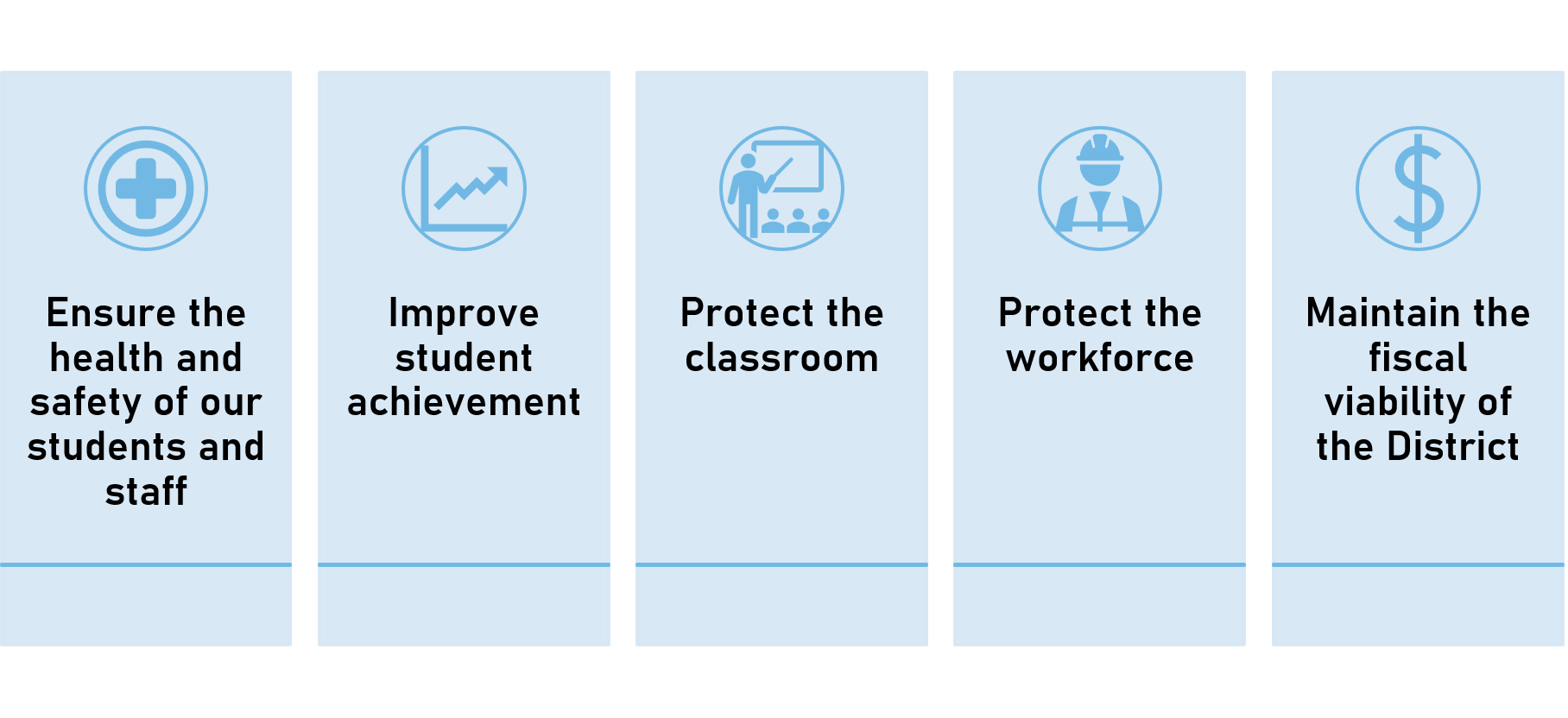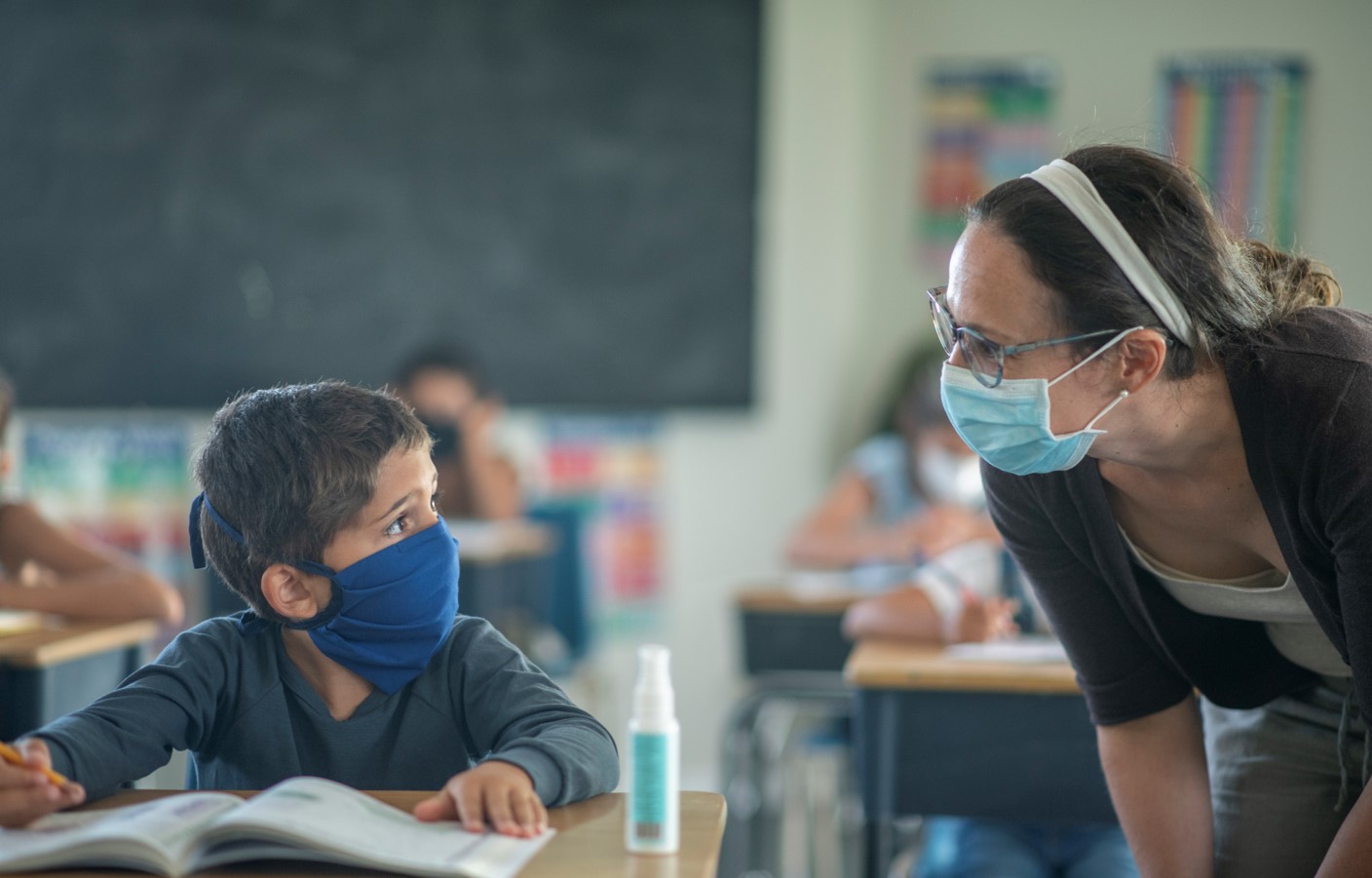ESSER Fund
Congress set aside approximately $13.2 billion of the $30.75 billion allotted to the Education Stabilization Fund through the Coronavirus Aid Relief, and Economic Security (CARES) Act for the Elementary and Secondary School Emergency Relief (ESSER) Fund (signed into law on March 20, 2020). The Department awarded grants to State educational agencies (SEAs) for the purpose of providing local educational agencies (LEAs), including charter schools that are LEAs, with emergency relief funds to address the impact that COVID-19 has had, and continues to have, on elementary and secondary schools across the Nation.
The Coronavirus Response and Relief Supplemental Appropriations (CRRSA) Act, was signed into law on December 27, 2020 and provides an additional $54.3 billion for the Elementary and Secondary School Emergency Relief (ESSER II) Fund.
On March 11, 2021, the American Rescue Plan (ARP) Act was signed into law. It is an unprecedented $1.9 trillion package of assistance measures, including $122 billion for the ARP Elementary and Secondary School Emergency Relief (ARP ESSER III) Fund.
Funds are provided to SEAs and school districts to help safely reopen and sustain the safe operation of schools and address the impact of the coronavirus pandemic on the Nation’s students. ESSER Fund awards to SEAs are in the same proportion as each State received funds under Part A of Title I of the Elementary and Secondary Education Act of 1965, as amended, in fiscal year 2019. While all ESSER funds have several requirements and associated restrictions regulating their allowable use, ESSER II and ARP ESSER III require the development of specific spending plans.
ESSER II (CRRSA) & ESSER III (ARP) - FUNDING TO M-DCPS
| Grant | Allocation |
|
* District Portion | Spending Deadline | |
|---|---|---|---|---|---|
| ESSER II (CRRSA) | 468,534,260 | 103,949,291 | 364,584,969 | 9/30/2023 | |
| ESSER III (ARP) | 1,051,034,622 |
|
813,218,440 | 9/30/2024 | |
| Total ESSER II & ESSER III |
$ 1,519,568,882 | $ 341,765,473 | $ 1,177,803,409 |
** Other ARP funds will funnel down to the District, including a specific federal allocation for homeless students, as well as currently unknown state sub grants.
District's Guiding Principles for Budget Development

ESSER II (CRRSA) & ESSER III (ARP) - Timeline

M-DCPS - Spending Categories
Accelerate Learning
Over the past year, many of our students have not been in an ideal learning environment. It is vital that those academic losses are measured, and strategic initiatives are developed and implemented to close the learning gaps at a historically rapid pace.

Promote Mental & Physical Health
The anxiety and trauma that many of our students have dealt with, and continue to deal with, over the past year will impact their ability to succeed in the classroom and affect their daily lives. Working to ensure that those issues are properly addressed is critical.
Prepare for & Avoid Potential Future Closures
From school facility improvements to continued enhanced cleaning protocols, we need to use these funds to lower the risk of virus transmission at our schools. Additionally, we need to prepare for a future when instant pivoting to distance learning is unavoidable.
Maintain Operations & Retain Existing Staff
Maintaining operational capacity and retaining full-time employees is part of the commitment made by our School Board. M-DCPS remains steadfast in promoting the wellbeing of our most valuable resources, our faculty and staff, as well as our operational capacity even through the most unique of crises.
ESSER II (CRRSA) & ESSER III (ARP) Spending Categories – Draft Plan
| Categories | ESSER II | ESSER III | Percent |
|---|---|---|---|
| Accelerate Learning | 135,516,352 | 363,126,728 | 42% |
| Promote Mental & Physical Health | 52,689,441 |
266,448,400 |
27% |
| Prepare for & Avoid Potential Future Closures | 43,336,745 |
87,436,906 |
11% |
| Maintain Operations, Retain Employees, & Indirect Costs | 135,091,106 |
106,305,897 |
20% |
| Grand Total | $ 366,633,644 | $ 823,317,931 | 100% |

ESSER II (CRRSA) &ESSER III (ARP) Assurances
- Expenses must be eligible under Federal education laws
- Coordinating preparedness and response efforts of local education agencies (LEA) with State and local public health departments and other relevant agencies to improve coordinated responses to coronavirus
- Providing principals with resources necessary to address needs of their individual schools
- Activities to address the unique needs of at-risk students
- Developing and implementing procedures and systems to improve the preparedness and response efforts of LEAs
- Training and professional development for staff of the LEA on sanitation and minimizing the spread of infectious diseases
- Purchasing supplies and sanitizing/cleaning the facilities of an LEA
- Planning for long-term closures (e.g., meals, technology, IDEA services, etc.)
- Purchasing educational technology
- Providing mental health services and supports
- Planning and implementing summer learning and afterschool programs
- Addressing learning loss, including:
- Assessments
- Evidence-based activities
- Information to parents and families to support kids
- Tracking student attendance and improving student engagement in distance education
- School facility improvements and repairs that reduce risk of virus transmission and exposure to environmental health hazards
- Improving indoor air quality in school facilities
- Other activities that are necessary to maintain the operation of and continuity of services in LEAs and the continued employment of existing LEA staff
- Strategies for implementing public health protocols for reopening schools
Additionally, per federal guidelines, 20% of the ARP ESSER allocation must be spent on academic learning loss. LEAs must submit a plan to the SEA for approval (template from DOE is pending) and the LEA must develop the plan with public input.
Unallowable Expenses
- Entertainment (e.g., a field trip without the approved academic support will be considered entertainment)
- Meals, refreshments or snacks
- End-of-year celebrations, parties or socials
- Game systems and game cartridges (e.g., Wii, Nintendo, PlayStation)
- Out-of-state travel without FDOE pre-approval
- Overnight field trips(e.g. retreats, lock-ins)
- Incentives (e.g., plaques, trophies, stickers, t-shirts, give-a-ways)
- Gift cards
- Decorations
- Advertisement
- Promotional or marketing items (e.g., flags, banners)
- Purchase of facilities or vehicles (e.g., buildings, buses, vans, cars)
- Land acquisition
- Kitchen appliances (e.g., refrigerators, microwaves, stoves, tabletop burners)
- Tuition
- Capital improvements and permanent renovations (e.g., playgrounds, buildings, fences, wiring)
- Dues to organizations, federations or societies for personal benefit
- Clothing or uniforms
- Costs for items or services already covered by indirect costs allocation
